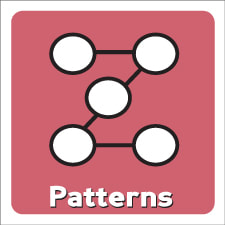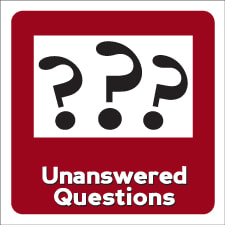
Depth and Complexity
9th Grade Pre-AP English 1

Language of the Discipline
Language of the Discipline is best described as the expert language or language specific to the subject.
Task Starters:
- What words are used specifically by people who work in this field or deal with this subject?
- What tools are used by experts in this field?
Language of the Discipline Refers to:
- terminology
- nomenclature
- lexicon
- tools of the discipline
- combinations and patterns of terms
- jargon, idiom
- signs and symbols
- figures of speech
- eponyms and neologisms of the discipline

Patterns
Patterns deal with what normally occurs within a field or subject- the repetitive and normally predictive behavior.
Task Starters:
- Describe the patterns you find.
- How is a pattern relevant to what you are studying?
- How does one pattern compare to another?
- Identify the primary and secondary patterns.
- How are the patters and details related?
Thinking Skills:
- Cause and Effect – Predict
- Prioritize and Identify Relevant Information
- Identify Relationships
- Sequencing
- Judge with Criteria
PLOT PATTERNS, CONFLICT, CHARACTER BEHAVIOR
Trends
Trends deal with a “zoomed in” perspective of what changes through time. These are quick changes that can change moment-by-moment or year-by-year. A good example could include fashion changes or idea popularity. Remember- these are specific changes, not to be confused with “Changing Over Time” questions. Don’t confuse them with patterns (what stays the same), as trends deal with what changes.
Task starters:
- Identify relationships between trends.
- How is this trend related to the ideas in your text?
- How and when does a fad become a trend?

Over Time
Over Time deals with the bigger historical development of ideas- how subjects relate with history and how they will affect the future.
Task Starters:
- Describe the past, present and possible future related to this issue.
- Identify a time that this issue or topic was different.
- Describe the possible causes of the current status of this issue.
- Differentiate fact from opinion (over time) regarding this issue.
- How does knowing the historical development of this issue change how you view it today?
- How will things play out?

Rules
Rules include what must be or must happen. These include the laws of nature or unchangeable predictable behavior.
Task starters:
- Describe the rules related to this topic.
- Compare structural rules and procedural rules.
- Identify relationships among rules.
- Categorize/Classify rules
- Judge the importance of the rules.
Language Arts:
Genres, grammar, punctuation, words usage, rules of style, poetry, proofreading, matching writing to purpose

Big Idea
Big Idea is used extensively in ELAR, as it determines the THEME or SUBJECT of the text being analyzed. It can also include a brief summary of the topic.
Task Starters:
- List the evidence needed to support a big idea.
- How are patterns, trends, and rules related to big idea.
- Describe the big idea.
- What supporting evidence do you have for your big idea?
- Identify relationships between big ideas.
Note: Use the actual icon as a graphic organizer for writing or reading by asking for four supporting details to be placed in each of the columns.

Details
Details go with the big idea, as they must be related. One can use this skill to identify the important details verse the unrelated details- which is a key skill.
Task Starters:
- What details are the most important to the big idea?
- What features characterize this?
- Categorize/classify the details, determining relevance.
- Sequence of details.
- Identify relationships between details.
ELAR:
Characters, setting, description, connotation, information

Unanswered Questions
Unanswered questions are a phenomenal tool to get kids to go deeper with concepts. These are meant as a tool of inference or to dig up possible theories.
Task Starters:
- What has not been explored, proven or understood about the topic?
- What questions haven’t been answered explicitly by the story?
- Why is a certain character behaving this way?
- How do you evaluate an unanswered question’s importance?
- Note ambiguity
- Test assumptions
Good project idea: Have students create “fan fiction” based on their questions about a character’s motives or the unknown aspects of plot. What would happen next? What if things change? Why did this happen?

Ethics
Ethics deal with conflict, controversy, opinions and possible issues of dispute.
Task Starters:
- Describe the ethical issues you see.
- What are some beliefs, values and judgements that exist in the text?
- What moral principles are related to this subject?
- Distinguish fact from opinion
- How does society teach a certain ethical perspective?
ELAR:
plot dilemmas, conflicts, patterns of “good” and “evil,” media: editorials, political cartoons, bias

Multiple Perspectives
Multiple perspectives force you to look at all the points of view on a subject and evaluate them.
Task Starters:
- How do different people view the topic?
- What er the pros and cons of each viewpoint?
- Why do people feel the way they do regarding this issue? Where are they coming from?
- Evaluate the different perspectives.
ELAR: Have students write from the perspective of the villain or supporting character.

Across Disciplines
Across disciplines deals with “horizontal” alignment of the big idea with other subjects, their connections, etc. This deals with how a subject intersects with others.
Task Starters:
- Describe a topic’s place in more than one discipline.
- How does the topic relate or influence another subject?
- How does this story relate to philosophy? Sociology? History? Math or science?
Published: Jul 17, 2019
Latest Revision: Jul 17, 2019
Ourboox Unique Identifier: OB-665347
Copyright © 2019







